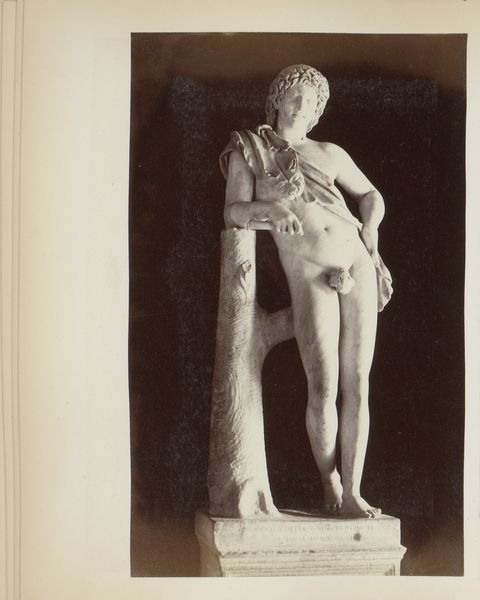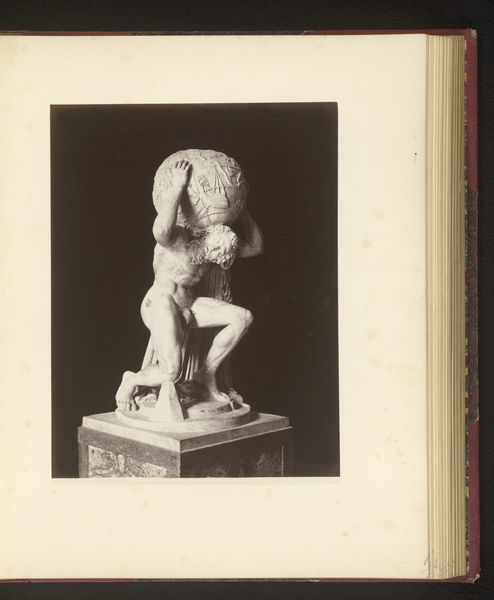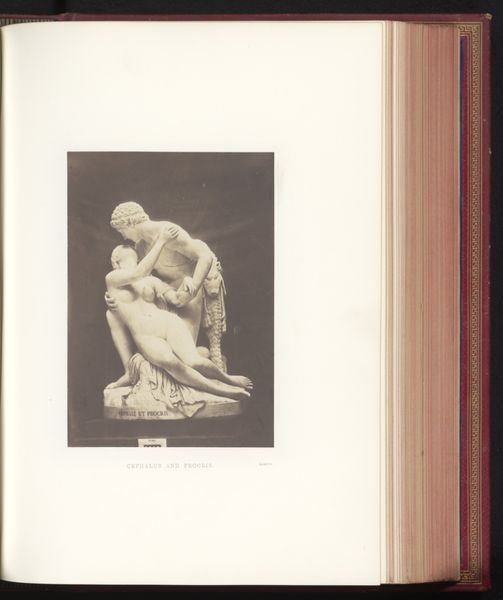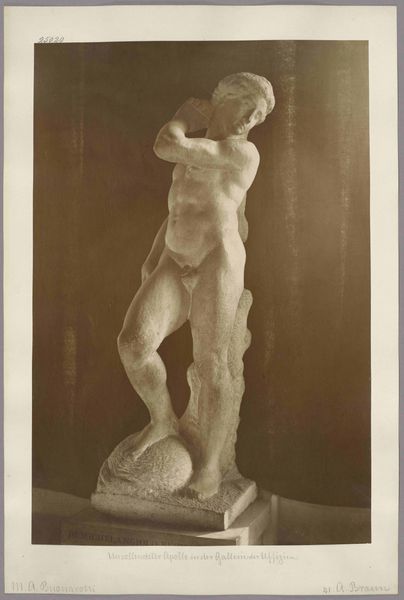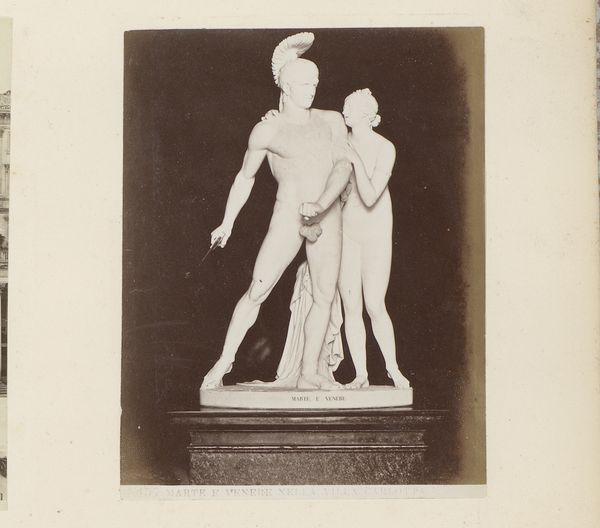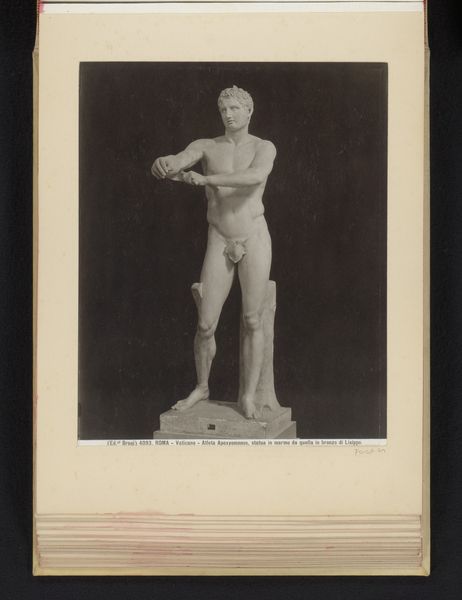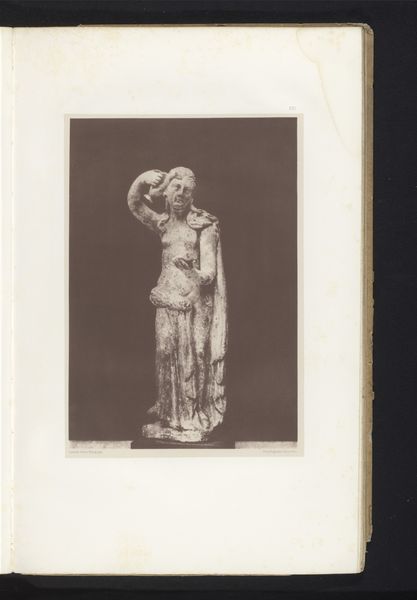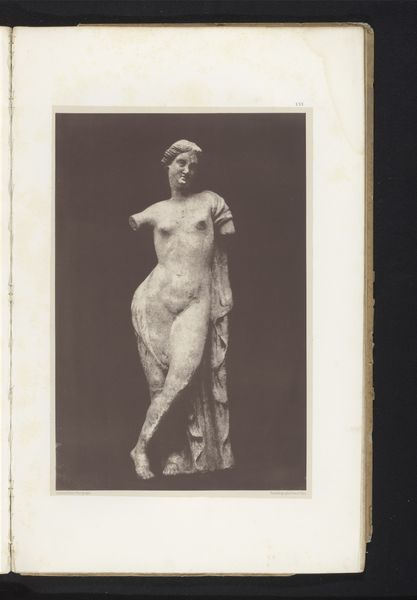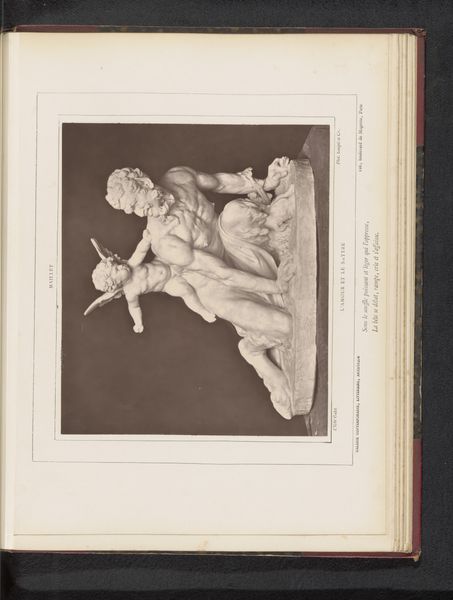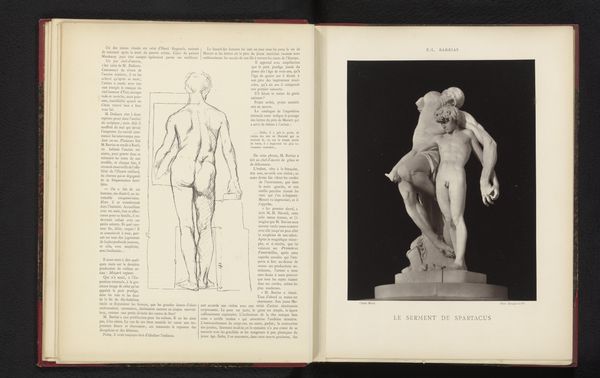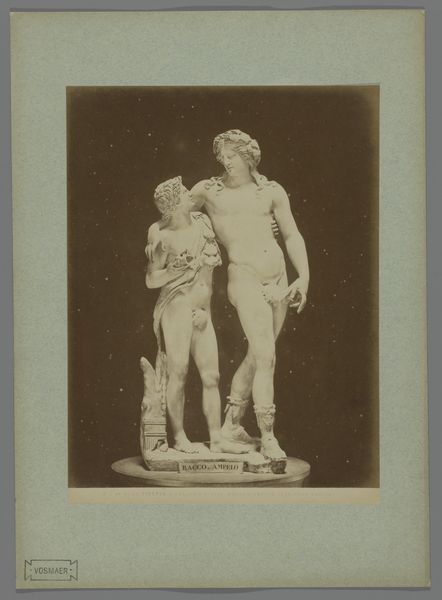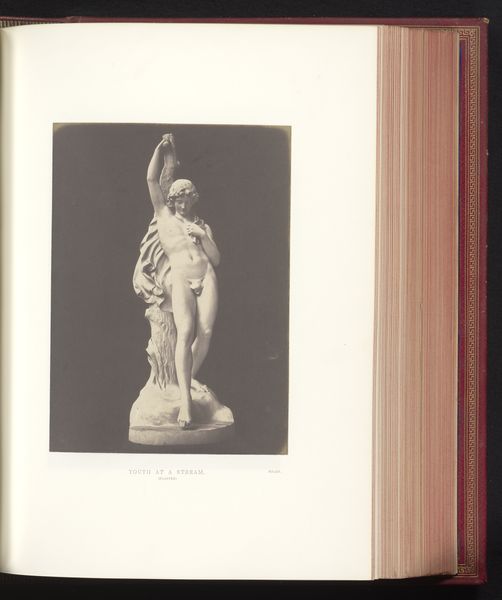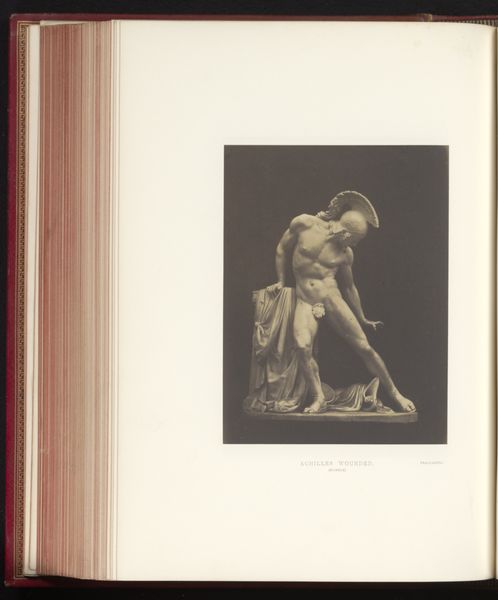
photography, sculpture
#
portrait
#
sculpture
#
greek-and-roman-art
#
classical-realism
#
photography
#
sculpture
#
academic-art
Dimensions: height 251 mm, width 201 mm
Copyright: Rijks Museum: Open Domain
Curator: Here we have Giorgio Sommer’s photograph of the “Hercules Farnese,” captured before 1879. The Rijksmuseum holds this incredible piece. Editor: My goodness, what a presence! He practically vibrates with suppressed energy. The monochrome palette amplifies his monumental feeling. Curator: It’s fascinating to see how photography, a relatively new medium at the time, engaged with classical sculpture. Sommer documented the ready availability and enduring influence of Graeco-Roman artistic values through widely distributed mediums. Note that what we are seeing is also, of course, the after-product of centuries of sculptural traditions and labour in sourcing materials. Editor: Absolutely. Look at how Sommer used light to sculpt the figure further, exaggerating the musculature and deepening the shadows. It's almost theatrical, turning stone into living, breathing, albeit idealized, flesh. One almost gets the feeling that this sculpture, in this image, seeks the same heroic admiration that would've been a function of viewing the sculpture at eye-level. Curator: Exactly. It serves not just as a record, but an interpretation of existing traditions and ways of distributing sculpture via early photography practices. How many prints, do you suppose, were circulated featuring the artistic canon reproduced as images. We often forget to examine how the development and means of circulation through photography altered access and visual memory! Editor: I bet quite a few! But stepping back from historical processes, there’s a vulnerability about the way Hercules stands. The slight slouch, the weight on one leg...he appears thoughtful. Does it change our reading of heroism? I always wonder about the burden of strength, the stories we imagine these bodies carrying beyond obvious displays of triumphant glory. It is clear to see the social constructs, that have continued through even modern reproductions, of male bodies and their performativity. Curator: An important point. Sommer’s image allows us a chance to not only appreciate a moment in the material culture, but also consider Hercules beyond pure physical prowess—a contemplative god, brought down to earth through reproduction. Editor: Beautifully said! I'll certainly never look at this photograph of Hercules the same way. A new spin for an ancient form.
Comments
No comments
Be the first to comment and join the conversation on the ultimate creative platform.
